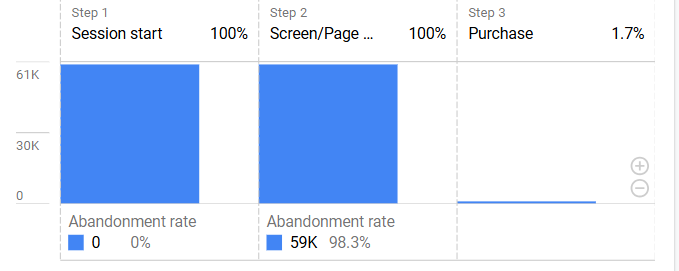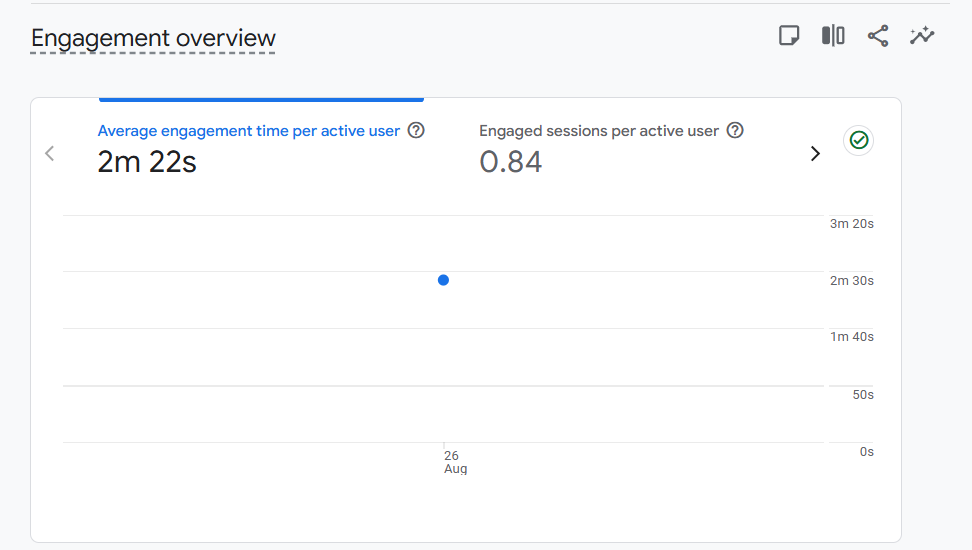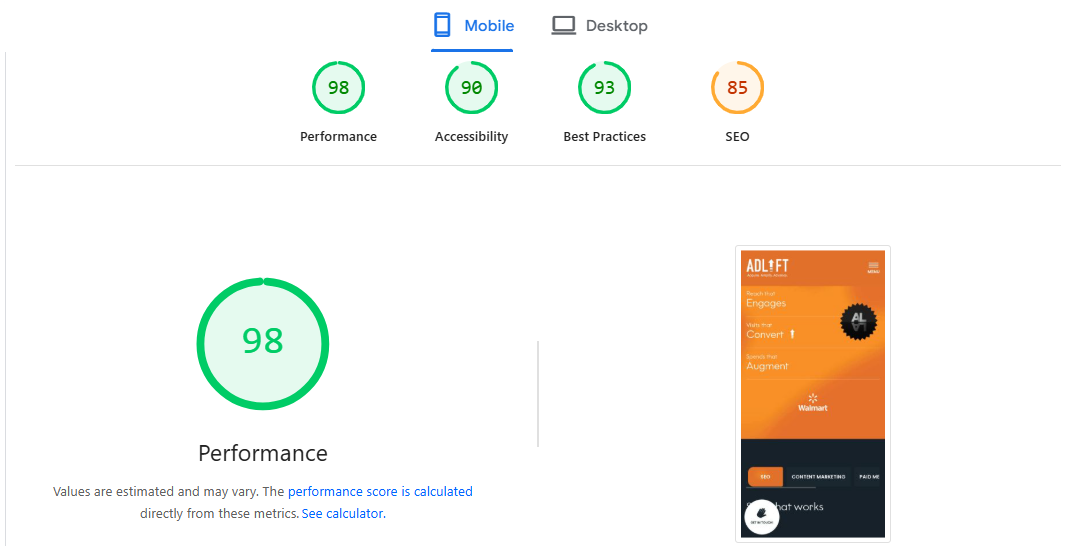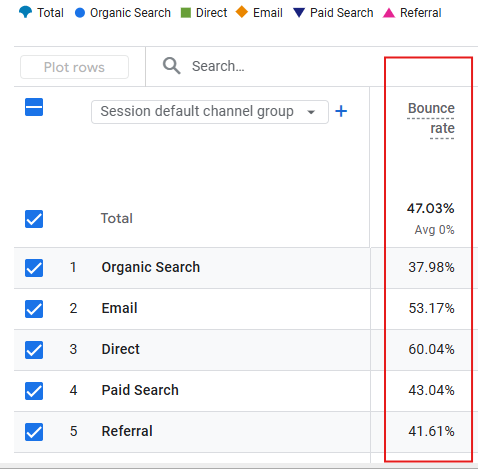B2B Website Benchmarks You Need to Know in 2025

3 seconds. Yes, that’s how much time you have to impress a user who visits your B2B website and convince them to stick around. That’s even shorter than the time it takes to finish reading this sentence.
And no, it’s not something we are making up for a dramatic effect; studies have shown that 83% users wait only for 3 seconds for a site to load before they leave it.
So, if your B2B website page doesn’t load fast, show value clearly, and guide the visitor within those few seconds, they’re gone. This is why tracking the right B2B website benchmarks is so important.
We have jotted down all such must‑track B2B marketing benchmarks so you can spot bottlenecks early, hit your B2B marketing ROI benchmarks, and keep every click moving toward revenue. At AdLift, we help businesses track and optimize these benchmarks so they can turn every website visit into a growth opportunity.
Top 5 B2B Website Benchmarks You Should Focus On
To know if your website is actually working for your business, you need to track the right numbers. Here are the top 5 B2B Website Benchmarks that matter most:
Website Traffic Growth
Let’s start with the obvious question: Are people even showing up?
Website traffic growth is one of the clearest signs that whatever efforts you have made online are paying off. You can measure it by checking if there is any increase (or dip) in the number of people visiting your site over time. Most businesses track it either month-over-month or year-over-year to spot trends.
Here’s your action plan:
- Focus on Long-tail Keywords: These are specific search terms that your potential customers are searching on Google. So, create content that ranks high for such keywords and get more relevant visitors on your site.
- Keep Your Content Updated: Make sure you regularly update your blogs, landing pages, and resources so they can stay visible on Google.
- Bring the Traffic to You: Focus on inbound strategies like SEO, smart social posts, and targeted paid ads. The goal? Attract people who are already halfway sold.
[image alt text -Website traffic growth by channel]
Conversion Rate Benchmarks
Now, let’s move to the second B2B website benchmark, i.e., your conversion rate.
For B2B companies, the average lead-to-customer conversion rate hovers around 11%. To stay ahead, you need to not just meet that B2B digital marketing benchmark, but beat it.
Here are some tips you can use to improve your conversion rate:
- Make Clear and Easy CTA: Your call-to-action (CTA) should be impossible to miss and very clear. Plus, whether it’s “Book a Demo” or “Download the Guide,” make sure it’s crystal clear what you want people to do next.
- Create High-converting Landing Pages: This is your chance to offer real value like a free trial, a toolkit, or a personalized demo. Keep things focused, remove distractions, and make it easy to say “yes.”
- Test, Tweak, Repeat: Run A/B tests on headlines, forms, CTAs, and layouts to find what works best.
[image alt text -Conversion funnel showing session start to purchase]
Engagement Metrics
One of the clearest B2B website benchmarks is how long people stick around. Are they scrolling through your pages, reading your content, and exploring what you offer? That kind of digital body language means you’re holding their attention.
For B2B websites, the sweet spot for average session duration is 3 to 5 minutes. If visitors are spending that much time on your site, it’s a strong sign they’re finding real value in your content and may be going closer to converting.
Here’s how to keep visitors engaged:
- Provide In-depth, Genuinely Helpful Content: Don’t skim the surface. Write content that directly solves your audience’s biggest questions and compels them to read more.
- Use Rich Media to Add Variety: Videos, infographics, and case studies not only break up the monotony of text but also make your message more memorable and digestible.
- Add Interactive Touchpoints: Tools like quizzes, calculators, interactive charts, or live chat widgets give users something to do, and that keeps them involved.
[image alt text -Engagement overview showing average session duration per user]
Mobile Optimization
Chances are, a decision-maker is checking out your site while juggling emails on their phone. That’s the norm now; more B2B buyers are using mobile to explore options, compare solutions, and even review B2B email marketing benchmarks while on the go. So, if your site doesn’t load well or looks clunky on smaller screens, you’re already losing potential leads.
Here’s how to stay mobile-ready:
- Use Responsive Design: This means every element on your website, from images to buttons, should adjust beautifully on any device, including tablets and mobiles.
- Speed It Up: As we mentioned before, slow websites push users away. So, avoid elements like heavy images or slow servers. Instead, compress files and use mobile-friendly tech to keep the website smooth and fast.
[image alt text -Mobile performance report showing high scores for speed, accessibility, and best practices.]
Bounce Rate
Ever clicked on a site and left in seconds? That’s a bounce, and it happens more often than you think. A high bounce rate usually means visitors aren’t finding what they came for.
Here’s how to keep people from bouncing off your site:
- Speed Matters: If your site takes too long to load, people won’t wait. Make sure pages are fast and smooth.
- Match Intent: If someone searches for a specific topic and lands on your page, give them exactly what they came for.
- Guide Them Further: Use clear content, internal links, and helpful CTAs to encourage deeper browsing.
[image alt text -Bounce rate comparison across channels]
Also Read: Boost Your Website’s Visibility with These Must-have B2B SEO Tools
How to Track and Improve These Key B2B Website Benchmarks
Now that you know the right B2B website benchmarks, take some time to understand how you can track and improve them to grow. Below are some tricks experts use for the same:
Regularly Monitor Your Analytics
Set up tools like Google Analytics, Hotjar, or Microsoft Clarity to track how users move through your site. Look at traffic sources, bounce rates, session durations, and conversions. These insights help you pinpoint what’s working and where you’re losing potential leads.
A/B Testing for Continuous Improvement
We believe in testing rather than guessing because it gives a clear idea of what works. So, always A/B test different versions of your CTAs, landing pages, or even headlines. Over time, you’ll find patterns that increase engagement and remove friction from the user journey.
SEO and Content Strategy
Optimize your content for the keywords your audience is actually searching for. Strengthen your internal linking, earn solid backlinks, and keep your blog fresh with valuable content. Over time, this builds trust, visibility, and real momentum.
Also Read: Best B2B Digital Marketing Strategies for 2025
Don’t Leave Your Website on Autopilot
Think of your website as your most committed salesperson, always on, always ready. But even the best performers need support. If your site isn’t hitting the right B2B digital marketing benchmarks, you could be missing out on leads, conversions, and real revenue.
At AdLift, we help B2B brands turn underperforming websites into powerful growth engines. With data-backed strategies, creative execution, and continuous optimization, we make sure your digital presence actually delivers results. If you’re ready to level up your web performance, we’re here to help.
Hitting your B2B website benchmarks is crucial, but scaling beyond them requires the right expertise. Partner with our Digital Marketing Agency in India to craft data-driven strategies that fuel long-term growth and stronger ROI.





